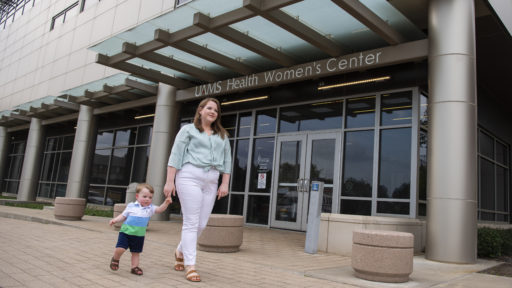A myomectomy is a surgical procedure to remove uterine fibroids while leaving your uterus intact. Uterine fibroids are noncancerous growths that can appear in your uterus during your childbearing years. For women who want to become pregnant, your chances of pregnancy may be improved by having uterine fibroids removed.
Types of Myomectomy
There are three surgical methods for myomectomy: hysteroscopy, laparoscopy and laparotomy. Several factors determine which method will be used:
- Size
- Location
- Number of fibroids
- Need to correct urinary or bowel issues
Hysteroscopy
During a hysteroscopy procedure, a lighted viewing instrument is inserted through the vagina and into the uterus. This technique is done to remove fibroids on the inner wall of the uterus that are not deep. This is an outpatient procedure, and recovery time varies from a few days to as long as two weeks.
Laparoscopy
Laparoscopy is a minimally invasive procedure in which your doctor will make a small incision in or near your belly button to remove the fibroid. This method is typically used when you need to remove one or two fibroids, no larger than two inches across, that are growing on the outside of the uterus. A laparoscopy can be done on an outpatient basis, but you may need to stay in the hospital overnight. Recovery time is usually one to two weeks.
Laparotomy
A laparotomy requires a full abdominal incision, either vertically or horizontally, under general anesthesia. Using an incision in your uterus down to the level of the fibroid, this technique is used to remove multiple fibroids, large fibroids or fibroids that have grown deep into your uterine wall. You will need to stay in the hospital for one to four days with a complete recovery time of four to six weeks.
After Myomectomy Surgery
After surgery, many women will experience some excessive menstrual bleeding and pelvic pain or pressure. Fibroids could return, but they may or may not require treatment. However, women who plan a pregnancy after a myomectomy often are able to conceive within one year of having the surgery.


